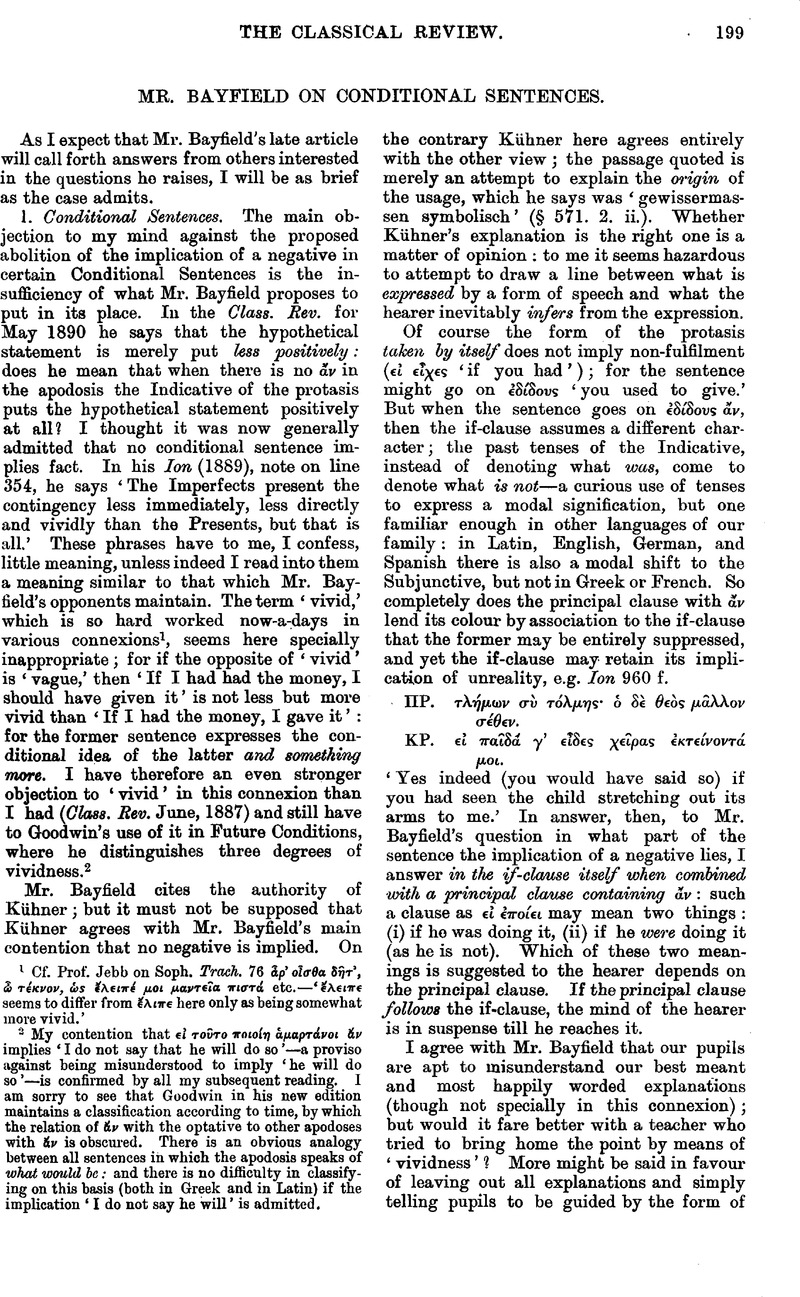No CrossRef data available.
Article contents
Mr. Bayfield on Conditional Sentences
Published online by Cambridge University Press: 27 October 2009
Abstract

- Type
- Review Article
- Information
- Copyright
- Copyright © The Classical Association 1892
References
page 199 note 1 Cf. Prof. Jebb on Soph. Trach. 76 ![]() etc.— ‘
etc.— ‘![]() seems to differ from
seems to differ from ![]() here only as being somewhat more vivid.’
here only as being somewhat more vivid.’
page 199 note 2 My contention that ![]() implies ‘I do not say that he will do so’ —a proviso against being misunderstood to imply ‘he will do so’ —is confirmed by all my subsequent reading. I am sorry to see that Goodwin in his new edition maintains a classification according to time, by which the relation of
implies ‘I do not say that he will do so’ —a proviso against being misunderstood to imply ‘he will do so’ —is confirmed by all my subsequent reading. I am sorry to see that Goodwin in his new edition maintains a classification according to time, by which the relation of ![]() with the optative to other apodoses with
with the optative to other apodoses with ![]() is obscured. There is an obvious analogy between all sentences in which the apodosis speaks of what would be: and there is no difficulty in classifying on this basis (both in Greek and in Latin) if the implication ‘I do not say he will’ is admitted.
is obscured. There is an obvious analogy between all sentences in which the apodosis speaks of what would be: and there is no difficulty in classifying on this basis (both in Greek and in Latin) if the implication ‘I do not say he will’ is admitted.
page 200 note 1 In such a sentence as ‘he would if he could’ the would is historically a subjunctive just as much as the could; so too in ‘he would write’ where would is au auxiliary.
page 200 note 2 It should be always borne in mind that language is an imperfect instrument for the expression of thought; we are often driven to employ forms of speech which express more than we intend.
page 200 note 3 The absolute vanishing point is reached in the case of temporal relatives: ‘when at any time’ is necessarily identical with ‘at any time when.’
page 200 note 4 Cf. Thuc. iv. 92 : ![]() . etc. That Mr. Bayfield is over subtle in his treatment of Od. xiv. 156 (Class. Rev. 1890, p. 203):
. etc. That Mr. Bayfield is over subtle in his treatment of Od. xiv. 156 (Class. Rev. 1890, p. 203):
![]() seems to me to be proved by the parallel passage II. ix. 312:
seems to me to be proved by the parallel passage II. ix. 312:
![]()


